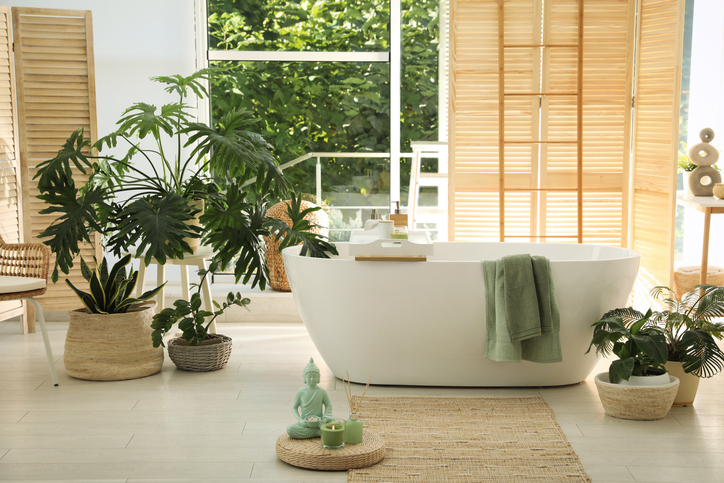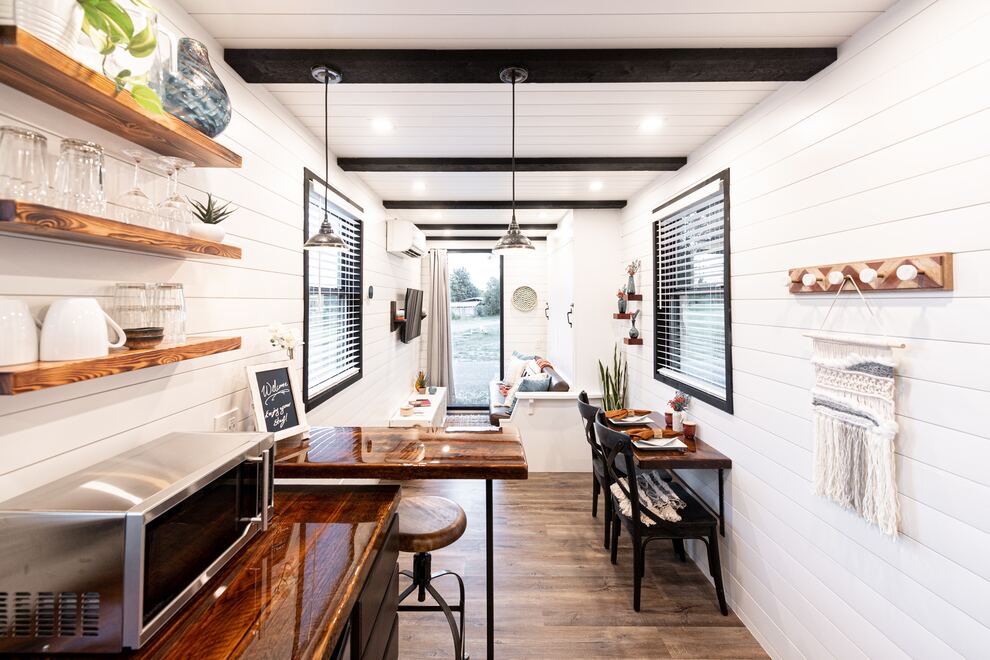Do you shriek every time you get your electricity bill? Maybe now is the time to consider replacing your old, leaking windows with new, energy-efficient ones. Windows are a big factor when it comes to saving energy while insulating your home from the outside temperature. When you’re home, you expect to be comfortable, no matter how scorching or frigid the temperature is outside. But poorly insulated windows can put a strain on your heating and air conditioning system and drive up what you pay to run it.
If you’re like many homeowners, you’re energy-conscious and want to cut your consumption, both to save money and to be a good steward of the environment. With so many choices in replacement windows, how do you know which ones will keep your house comfortable while still being affordable?
We’ll give you some tips and information on choosing the best window designs, frame materials, glass, and installation so you can enjoy years of perfect comfort without dreading your utility bill.
Invest in Your Home
Replacing the windows in your home is a worthy investment. Installing quality insulated windows can put a dent in your energy costs for years to come. Your new windows will keep the cold or heat outside so you can enjoy your optimum temperature inside.
The less insulating factor of your windows, the harder your HVAC system works and the more electricity you pay for. Estimates that windows are responsible for at least 25% of your energy usage is from maintaining the inside temperature.
There are several things to consider when planning new windows for your home. What kind of frame material works best for your home and your budget? What type of glass and coatings are best, and do you want double-paned windows or triple-paned ones?
Frame materials
The material your window frames are made from can make a difference. You can buy frames made of wood, vinyl, or aluminum. Each material features pros and cons when it comes to looks, energy efficiency, and price. You’ll want to consider your home, climate, and budget before deciding.
A wood frame by its nature blocks more heat and cold transfer than other materials, like aluminum. They’re attractive to homeowners but are more expensive. However, you may need to maintain this eco-friendly material more than other types of frames. They can rot and attract mold, so if your climate is rainy or humid, you can expect issues down the road. However, depending on the species of wood used and how well it’s maintained, good quality wood window frames can last many years.
Wood-clad window frames feature a low-maintenance exterior material, usually vinyl or aluminum, covering wood. However, this window framing product isn’t the best for wet climates because water can pool between the layers and rot the wood. This type of material requires careful professional installation to reduce the likelihood of standing water that can cause rot.
Vinyl window frames are less expensive than wood or wood-clad materials, and if they’re well-constructed and installed properly, they’re a good, affordable, energy-efficient choice. Color choices are limited, though, and some homeowners aren’t fans of the vinyl window look.
Because aluminum window materials are strong, they are good for meeting coastal hurricane building codes. They’re good for rain-heavy and humid climates, but they allow more temperature transfer than other materials.
Glass
Now that you’ve decided which material is best for your window frames, it’s time to choose the glass, which is crucial to keeping your house comfortable without costing you an arm and a leg. For years, windows were made of a single pane of glass. This allowed a lot of temperature transfer. Now, however, you’ll want to start with at least two panes of glass to save energy. The more panes of glass, the more insulating factor your window will have.
Windows with multiple panes also block some ultraviolet (UV) rays that can damage and fade your furniture, drapes, carpet, and other materials in your home. Because multiple-paned windows are more insulated, you can open up the blinds and let the light in without worrying about too much heat coming in during the summer, or too much cold seeping in during the winter.
What are Double-Paned Windows?
Double-paned windows are just that – windows with two panes of glass. The air trapped between the layers helps stop the transmission of hot or cold air. Most newly-manufactured windows are now double-paned.
Triple-Paned Windows
If you live in a climate that features harsh winter weather, you may want to consider triple-paned windows. These windows have three panes and lock even more air in to insulate your indoor living space from the extreme cold outside. There is a tradeoff for all of that insulating power, though. Three panels of glass reduce the light that comes into your space.
Coatings and Gas Injections
In addition to more than one pane, newly-built windows can contain transparent coatings for extra insulation. This coated glass provides low-emissive layers that help prevent even more heat transfer and also block UV rays while letting the light through.
You can also opt for windows with an injection of a heavy gas like argon between the layers of glass, offering even more insulation than air.
Types of Windows
Just as there are different materials, there are also different types of windows, such as double-hung windows, casement windows, and picture windows. Each serves a different use.
Double-hung windows are common and what most modern homes have. The bottom of a double-hung window slides up to open it. They’re great for most climates, but in extreme climates, they may allow air to whistle between the sliders.
Casement windows are excellent choices in windy climates. This window construction features a crank that swings the window out to open. When closed, it seals itself tighter than double-hung windows so less wind blows through.
Picture windows are ones that never open – their purpose is to let light in. Opting for multiple panes and gas filling helps these usually large windows maintain efficiency.
U-Value and Solar Heat Gain Coefficient (SHGC)
When choosing your windows, pay careful attention to the energy rating numbers. They can tell you a lot.
Window manufacturers voluntarily participate in an energy-performance labeling program from the National Fenestration Rating Council (NFRC) to help both homeowners and contractors choose the most energy-efficient window for their needs and a particular climate.
The very first thing you should look for is an energy-star-rated window. Each new window contains a label with numbers and codes. The upper left corner contains the NFRC certification, which means the council has certified that particular window and its manufacturer according to NFRC standards. The upper right side of the label shows you the materials the window is made from, the manufacturer, model, and style.
You’ll notice energy performance ratings on the label. The U-factor ranges from .20 to 1.20 and shows its resistance to heat flow. The lower the number, the better. The window’s R-value measures its insulating value.
Another rating you’ll notice is the Solar Heat Gain Coefficient (SHGC). This number tells you how well the window blocks heat from the sun. Numbers range between 0 and 1, and as with the U-factor, the lower the number the better, meaning it lets in less solar heat.
You’ll also want to look for a window with a higher Visible Transmittance (VT) number. The VT is rated between 0 and 1. The higher the number, the more light is transmitted. The light coming through the panes: good. The heat coming through the panes: bad.
You’ll also see other ratings for Air Leakage (you’ll want a low AL number) and Condensation Resistance. Look for a higher CR rating, which goes from 0 to 100.
Choosing the Best Design
Now that you’re armed with more information about the ins and outs of window types, materials, and energy efficiency ratings, it’s time to consider the best type of replacement windows for your climate and existing home construction.
Financial Benefits of Replacing Your Windows
There are definite benefits to replacing your windows with new, energy-efficient ones. You’ll save money not only on your energy bills but on maintenance and replacement costs of your HVAC system.
Save Money
The exchange of heat or cool from your house to the environment equals up to a third of your monthly energy usage. This amount fluctuates, and also depends on whether you live in a colder or warmer climate. But you can look forward to a lowered monthly energy cost after upgrading your old, inefficient windows to new, insulated ones.
Extend the Life of Your HVAC System
With your existing, inefficient windows, you can be sure your air conditioner or furnace is working overtime to maintain the inside temperature that makes you comfortable. This is especially true during the hot summers or cold winters, depending on where you live. We ask a lot of our heating and air systems, and they don’t last forever. If you can reduce the load on your system that can extend the life and extend the time before you need to invest the big bucks to replace it.
Increase the Value of Your Home
Installing good-quality insulated windows can bump up the value of your home. This is great news if you plan to sell your residence in the future. Potential homeowners know their energy costs won’t be outrageous and it’s a remodel or upgrade they don’t have to worry about doing. You may be able to recoup most of the initial investment of your windows by the increased home sale price.
So, it’s a win-win: you save money while providing a comfortable living space and you can get back much of that investment if you sell your home.
Environmental Benefits
There are definite environmental benefits of installing replacement windows. Find a recycling place to take your old windows. The windows could see new life for someone else, or the materials, including glass and aluminum, can be recycled.
You can cut your carbon footprint when you install new, energy-efficient windows because you are running your HVAC system less. Older, low-quality, single-pane windows have the opposite effect, wasting energy as you try to stay comfortable inside your home.
Update Your Home
In addition to lowering your energy bills and boosting your home value, there’s something satisfying with updating your home from an aesthetic viewpoint. New windows can provide a new curb appeal to your home with cleaner lines and a brighter look.
Window Installation Matters
Just getting the best type of window for your home and climate isn’t enough; windows must be installed properly to be energy efficient. Work with professionals who will follow your window manufacturer’s instructions. Directions for installing windows will vary according to the windows and your own home’s construction, whether you’re putting them into a wood or masonry home, and also depends on whether your exterior has stucco, vinyl siding, brick, wood, or other cladding. The professional you hire should use the proper flashing and sealing techniques, including caulking.
An Attractive, Lasting Investment for Your Home
Now that you’ve decided to replace your old, inefficient windows with new, energy-saving windows, you can rest easy knowing you’ll save money on energy costs while keeping harmful UV rays out, reducing noise pollution, and providing a nice, snug, draft-free interior. The added visual appeal of new windows and increased home value are bonuses.




